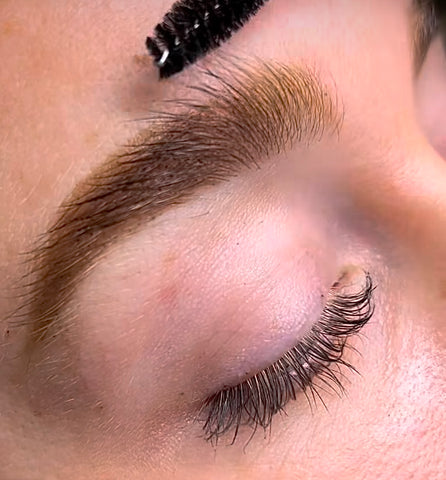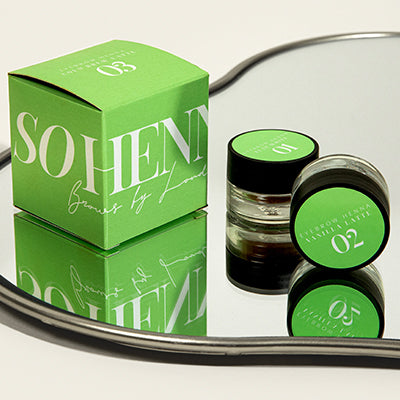FREE STANDARD SHIPPING FOR ORDERS OVER 99€!
FREE STANDARD SHIPPING FOR ORDERS OVER 99€!
Glues & Liquids
Eyelash Extensions
ACCESSORIES
So Henna

Why are My Client's Henna Brows Orange?!
февруари 01, 2024 3 min read
Are Your So Henna Brows Orange? Oxidation Explained
A question we often get asked is, ‘Why are my client's brows orange when I remove the henna?’. We get it; it can be a huge cause for panic, so we’re here to address this question and put your mind at ease! This temporary phenomenon, rooted in the oxidation process, can be a source of concern for both Brow Technicians and clients. In this detailed article, we aim to shed light on the science behind this occurrence and offer insights to ensure optimal results with henna brow treatments.
Understanding Henna in Brow Tinting
Henna, sourced from the Lawsonia Inermis plant, is a popular choice in brow tinting for its natural and semi-permanent colouring properties. However, the interaction between henna and the natural elements, particularly during the oxidation process, can lead to initial unexpected colour changes, such as an orange hue immediately after removal.
Oxidation in Henna Brows
The key to understanding the temporary orange tint in henna brows lies in the oxidation process. When henna is first removed, the colour may appear surprisingly orange or lighter than expected. This is a normal part of the henna's development process on the skin and hair.

Oxidation occurs when the henna dye is exposed to air. This exposure initiates a chemical reaction, causing the henna to gradually deepen in colour. The initial orange tint is simply a stage in the colour development process and is not indicative of the final colour.
The true colour of henna brows emerges a few minutes to several hours after the initial application and removal. This time frame can vary depending on individual skin types and the specific henna formula used.
Factors Influencing Oxidation
Several factors can influence the rate and outcome of the oxidation process, including skin type, room temperature, and humidity. Understanding these factors can help Brow Technicians manage client expectations and ensure satisfaction with the final results.
It’s important to remember that So Henna powder should be mixed in a Glass Dish. Mixing henna in a metal dish or container can directly influence the henna colour and can cause premature oxidation due to the metal reacting with the natural ingredients in the henna itself. This means that once placed on the brows the colour will not create the desired outcome for the client.

Managing Client Expectations and Aftercare
As a Brow Technician, it's essential to educate clients about the oxidation process and what to expect after a henna brow treatment.
Inform clients that the initial orange tint is a normal and temporary stage in the colour development process. Reassure them that the colour will deepen and stabilise within a few hours.
Remember to advise clients on proper aftercare to ensure the best results. This includes avoiding water and steam on the brows for at least 24 hours post-treatment and refraining from using harsh facial cleansers.
You can also encourage clients to observe the colour development over the next few hours and to contact you if they have any concerns or questions about the final outcome.

The temporary orange tint observed in henna brows immediately after removal is a natural part of the oxidation process and not a cause for alarm. By understanding and explaining this phenomenon, Brow Technicians can help demystify the process for their clients, ensuring a satisfying and stress-free henna brow experience. Stay tuned to the London Lash Blog for more insights and professional advice in the beauty industry, empowering you to excel in your role as a Brow Technician
Check out these featured products
Subscribe
Sign up to get the latest on sales, new releases and more …






























